Pittsburgh Pirates Top 30 Prospects: Ranking from 24-19

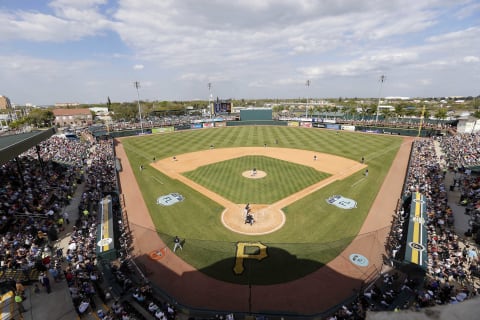
As the season approaches, it is time to look at the Pittsburgh Pirates top 30 prospects. Now up will be numbers 24-19 in terms of prospect rankings. All six are currently in the minor leagues, however one is competing for a job in the starting rotation.
Neal Huntington has done a solid job of filling up the Pirates minor league system over his tenure, with his first draft being in 2008, producing Pedro Alvarez, Jordy Mercer, and Justin Wilson. Rene Gayo and the scouting in Latin American countries has remained strong, as Gayo signed Marte (Dave Littlefield era), Gregory Polanco, and Alen Hanson, and each of them has been ranked in the Pirates top 10 at one point or another.
As Nick wrote yesterday, Gayo has also gotten these players at a discount compared to what other top Latin American prospects are getting. Gayo has done an excellent job at identifying talent when they are still raw prospects.
The team has drafted multiple shortstops over the last three seasons early, with Stephen Alemais being ranked as our 29th top prospect, mainly because of his incredible defensive ability at such a marquee position. The team has also drafted multiple high school arms early in the draft, three of which will be revealed today. With that, here are Rum Bunter’s prospect ratings 24-19.
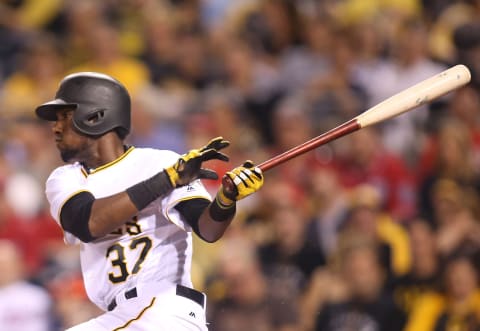
#24, Utility Player, Alen Hanson
Alen Hanson was signed by the Pirates in 2010 out of the Dominican Republic. From 2013 through 2015, Hanson was ranked as a top 10 prospect in the organization, reaching as high as number five in 2013. Once looking like a promising shortstop or second baseman with his speed and range, Hanson has quickly gone from top prospect to potential super utility player.
Hanson is out of options and would need to clear waivers for the Pirates to keep him in the system if he does not make the opening day roster. That’s a far fall from being a top five prospect, so what happened?
Hanson’s bat never truly improved from such a young age. His wRC+ over the last three seasons in the minors, between Altoona and Indianapolis, is just 103. A slightly above league average hitter in the upper minor leagues does not translate well to the majors, and despite his low strike rate, just 16.9 percent, Hanson has only walked 6.4 percent of the time.
His bat will never play in the majors, but as a switch-hitter with speed and the ability to play all over the field, Hanson might stick around the league as a super utility player. After all, he is still only 24 years old.
#23, Pitcher, Gage Hinsz
The Pirates drafted Gage Hinsz out of Billings West High School (Billings, Montana) in the 11th round in 2014. Hinsz, who is now 6’4″ and 210 pounds, was a projectable arm in the draft, something the Pirates always seem to target, see Tyler Glasnow.
MLB Pipeline took an aggressive approach with Hinsz, ranking him as the Pirates 12th top prospect, but they did rank him 16th last season in their mid-season update. In 2015, they ranked him 29th, but with his upside, it the push seems to create a hopeful mindset when looking at Hinsz.
Here at RumBunter, we’ve taken a more conservative approach with Hinsz. Despite MLB Pipeline describing Hinsz as,
“He’s touching 94-95 mph with his fastball now and there’s more in the tank to come. He can throw it downhill with sink and will profile well as a power groundball pitcher, the type of pitcher the Pirates covet. His breaking ball was a lot better at instructs, and could be above-average in due time. His changeup is still a work in progress.”
The descriptions on his hook and change are part of the reason why here at RumBunter we are more cautious. The other part stems from performance. Despite posting a 3.66 ERA for the West Virginia Power, Hinsz posted a 4.33 FIP and still was not striking out as many hitters as one would like to see, just 17 percent. But one positive is his control improvements. After walking 13.1 percent of hitters in 2015, Hinsz dropped that number to 6.3 percent last season.
If Hinsz can keep this control and start to miss bats in 2017, he will shoot up the prospect rankings. But because of his prior numbers and needing more development on two of his pitches, we’ll take the conservative route on him for the 2017 season.
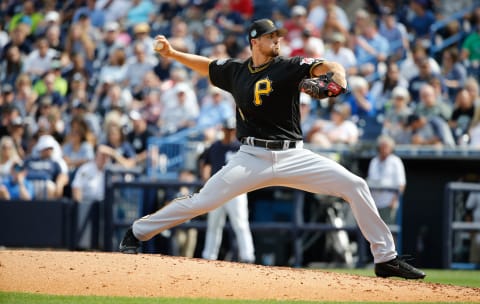
#22, Pitcher, Clay Holmes
Clay Holmes is another example of the Pirates taking a big arm out of high school based on the way they project. Holmes, who is 6’5″ and 230 pounds, was drafted in the ninth round of the 2011 draft, the same year the Pirates selected Gerrit Cole and Josh Bell.
The big righty missed all of 2014 with Tommy John surgery, so his development was delayed, but the club protected him from the Rule V draft this offseason by putting him on the 40 man. Holmes’ numbers are not that impressive, as he has not missed many bats and is rather wild. Last season, Holmes walked 10.7 percent of the batters he saw and struck out only 16.9 percent. But this was his first full season back from Tommy John, so the hope is he will improve control. That said, his walk rates were 12.3 percent and 13.1 percent in 2012 and 2013, his first two seasons with the organization.
There is hope for Holmes, however. That hope mainly relies on his ground ball ability, as he produced a 2.94 groundout to air out ratio in 2016, and has a career mark of 2.14. His velocity also shows some hope, as Nick pointed out after his outing against the Yankees
“His fastball was consistently hitting 95 and 96 miles per hour, and reached as high as 97 on the gun. At first, it seemed like the gun may have been ticked up a little. However, after going back and looking, Kingham’s velocity was only 92-94 and Taillon was hitting 94-95 routinely, both velocities that these pitchers are accustomed to. So it seems that Holmes’ velocity was accurate.”
Due to his control and not missing many bats, Holmes future likely lies in the pen. His ability to get hitters to put the ball on the ground, combined with his velocity, would allow Holmes to be a solid bullpen option in the future.
#21, Pitcher, Trevor Williams
More from Rum Bunter
- Pittsburgh Pirates Still Searching for Catcher Help
- Pittsburgh Pirates: Questioning the Vince Velasquez Signing
- Pittsburgh Pirates: Top Pitching Prospects Fans Could See Early in 2023
- Pittsburgh Pirates: Examining Players Gained, Lost in Rule 5 Draft
- Pittsburgh Pirates: Tucker Barnhart Not the Correct Fit at Catcher
The Pirates acquired Trevor Williams for Richard Mitchell (essentially payment for Jim Benedict) on October 24, 2015, from Miami. The former Marlins second-round pick made his major league debut last season but posted a 7.82 ERA in 12.2 innings. This season, Williams looks to compete for the number five starter in the Pirates rotation.
It was a small sample, but last season in Pittsburgh Williams featured four pitches, a four-seam, sinker, slider, and changeup. His four-seam averaged 94.20 miles per hour, with his sinker at 92.37 per Brooks Baseball. Williams won’t blow the ball past hitters, relying more on locating and hitting his spots. This limits Williams’ ceiling to a back-end of the rotation arm, but one in which he should achieve.
Williams showed good control last season with the Indianapolis Indians, walking only 6.5 percent of hitters. The problem is he did not miss bats, striking out just 16.1 percent. One thing Williams did do well was getting ground balls. In Indianapolis last season, Williams had a 1.38 ground out to air out, has a career minor league mark of 1.56. In Pittsburgh last season he got ground balls 45.5 percent of the time.
He’ll never be much more than a back-end starter or long reliever type, but these pitchers do carve out major league careers, and Trevor Williams has an opportunity to start his full-time major league career this season.
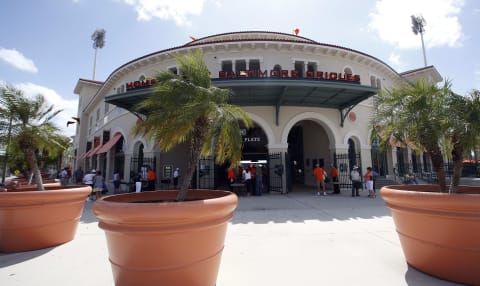
#20, Pitcher, Braeden Ogle
The Pirates selected Braeden Ogle out of Jensen Beach High School (Florida) in the fourth round. He was highly rated coming into the draft, as Baseball America ranked him 69th overall. His scouting report from draft day presents a nice picture:
“The Pirates get good value from 135th overall pick in the 6’2” and 180 pounds lefty. His fastball intriguing, he typically sits 91-93 miles per hour, but he has hit up to 96 miles per hour on the gun. His best secondary pitch is his curve-ball. He throws it hard and gets a solid spin rate on it. His change-up needs work, but he does have one that he has used. His biggest flaw is repeating his mechanics. The Pirates are used to dealing with raw, prep pitchers and should be able to work with him on his mechanics.”
Ogle pitched well in the Gulf Coast league last season. In his eight games, the 19-year-old left-hander pitched to a 2.60 ERA. He only struck out 18.2 percent of hitters and walked 10.0 percent, but with his age, he should improve.
Ogle will only continue to progress, and with the Pirates strong desire to help young high school arms, Ogle could rise up prospect rankings quickly. Ogle can develop into a nice rotation piece in time. Given that he is left-handed, that will be even more important at PNC Park.
#19, Infielder, Jordan Luplow
You won’t find Joran Luplow on many prospect lists if any. However, since last year, we at RumBunter have been a fan of his offensive ability. The club selected Luplow out of Fresno State in the third round in 2014. He’s played in three different leagues in his three years and has produced at all three levels.
Luplow has produced wRC+’s of 132, 135, and 129, and has shown the ability to walk. His walk rates over the last three years have been 10.4 percent, 12.7 percent, and 14.1 percent. Luplow even showed power last season, ranking second on the team with a .167 ISO.
Luplow has played left field, right field, and third base in his time with the organization, but all 81 of his games played in the field last season, Luplow played left.
If Luplow develops more defensively and settles into a position, his prospect status might show more. If he keeps up his power with his ability to walk, Luplow can become an average outfielder and provide great depth to the team. He can also be a John Jaso type, being a solid hitter with no true position, but the ability to play corner outfield and corner infield.
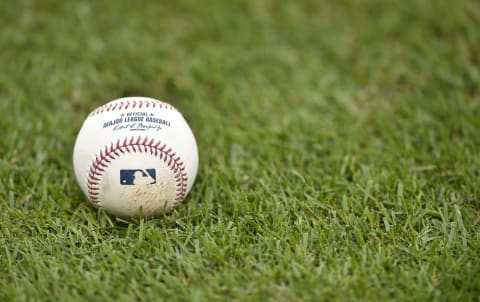
The Pirates 24-19 prospects feature two players who will likely impact the Pirates this season in Alen Hanson and Trevor Williams. Williams, who is competing for the final spot in the rotation, will likely have the larger impact. Hanson is out of options but is far from a given to make the club out of spring training. He provides speed and defensive flexibility, but his bat lacks.
Gage Hinsz is a former prep arm that the Pirates gave a large bonus too. They’ve been patient with him so far, and while the stuff is improving, there is still some strides need to made and that can be seen in his performance. Clay Holmes was added to the 40 man this offseason. With his velocity and ground ball ability, he looks to be a strong bullpen piece in the future. He has an outside chance of sticking as a starter but lacks control and secondary pitches.
Next: Pirates First Action In The WBC
Braedan Ogle s a young prep arm that the Pirates will take their time with. He’s left-handed and projects well with a hard fastball. Jordan Luplow is a sleeper-type prospect, and all he has done is hit in his three years in the system.
Prospects 18-13 will be released soon.